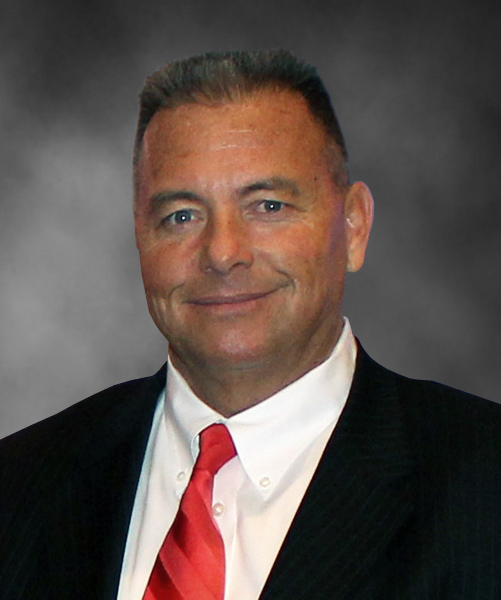OTHER NEWS
The Learning Center
Our Learning Center ensures that every reader has a resource that helps them establish and maintain a competitive advantage, or leadership position. For instance, loan originators and brokers will have one-click access to resources that will help them increase their productivity. Search topics by category and keyword and generate free videos, webinars, white papers and other resources. If you would like to add your content to the learning center, please click here or email Tim Murphy at [email protected].
Fraud Costs Rise 8.1%
- Wednesday, 31 October 2018
- Originating

It’s said everything goes up—and financial fraud is no exception.
One dollar of fraud, cost lenders $3.05 in 2018, compared to just $2.82 in 2017, an 8.1 percent increase. Digital lenders, with at least $50 million in annual revenue, are hit hardest by fraud, incurring $3.37 in costs in 2018, compared to just $3.07 in 2017, or about a 10% increase, according to the LexisNexis Fraud Multiplier and the 2018 True Cost of Fraud study on lending from LexisNexis Risk Solutions. The study reflects the views of 186 risk and fraud executives at lending institutions.
"While the rise of digital lending has given the lending industry new methods of reaching consumers, it also has brought unique fraud prevention challenges," said Kimberly Sutherland, senior director, fraud and identity management strategy for LexisNexis Risk Solutions. "Customer identity verification and synthetic identity  fraud are key challenges for lenders, as they seek to reduce the risk of customer friction, while still maintaining rigorous fraud and identity standards. It is crucial that lenders use not just a large number of tools in their fight against fraud, but layer in the right combination of tools."
fraud are key challenges for lenders, as they seek to reduce the risk of customer friction, while still maintaining rigorous fraud and identity standards. It is crucial that lenders use not just a large number of tools in their fight against fraud, but layer in the right combination of tools."
Other key findings from the study include:
- 54 percent of risk and fraud executives at large digital lenders state that verification of customer identity is their largest challenge, especially through the online channel.
- Lending firms that use a multi-layered solution approach experience a lower cost of fraud: $2.63 for every $1, compared with up to $3.47.
- Large digital lenders are more likely to think strategically about the adoption of fraud mitigation solutions, as they face attacks that are more significant.
Read more...
1.5 Million Single Family Homes Lie Vacant
- Tuesday, 30 October 2018
- Originating

Almost 1.5 million single family homes and condos in the U.S., roughly 1.52 percent, stood vacant at the end of the third quarter.
In addition, there were 10,291 vacant "zombie" foreclosures homes nationwide at the end of third quarter, representing 3.38 percent of all homes actively in the foreclosure process, according to the 2018 Vacant Property and Zombie Foreclosure Report from Attom Data Solutions. Fully 14,312 homes, 4.18 percent, were classified as zombie foreclosure in the third quarter of 2017.
"The number of vacant foreclosures is now less than one-fourth of the more than 44,000 in 2013 when we first began tracking these zombie homes," said Daren Blomquist, senior vice president at ATTOM Data Solutions. "Policy solutions such as land banks designed to mitigate the ripple effects of vacant properties on neighborhoods and cities have had a substantial impact, and a booming housing market in many areas of the country is lifting all boats.”
The states with the highest share of vacant homes were Tennessee (2.65 percent), Kansas (2.50 percent), Oklahoma (2.49 percent), Mississippi (2.47 percent), and Indiana (2.45 percent).
The metropolitan statistical areas with the highest share of vacant homes were Flint, Mich. (6.99 percent); Youngstown, Ohio (3.80 percent); Beaumont-Port Arthur, Texas (3.71 percent); Myrtle Beach, S.C. (3.70 percent); and Mobile, Ala. (3.69 percent).
The counties with the highest share of vacant homes were Baltimore City, Md. (7.83 percent); Genesee County (Flint), Mich. (6.99 percent); Saint Louis City, Miss. (5.93 percent); Bibb County (Macon), Ga. (5.73 percent); and Wayne County (Detroit), Mich. (5.60 percent).
Read more...How Originators Can Add Commercial Loans To Their Repertoire
- Friday, 26 October 2018
- Originating

Times are challenging for originators.
There are too few residential loans to go around, and the phones don’t ring like they used to during the refi boom. Residential mortgage brokers, however, don’t have to sit there and take it passively. They have an outstanding opportunity to open a new channel—and a significant new revenue source—commercial mortgages.
Adding that product, and the commissions they generate, requires knowing a few key ratios, and the information required to calculate them. The originator might not even have to do the calculations—but merely serve as a facilitator of the loan process.
Many originators don’t know the commercial side, so they’ve preferred to refer the business to someone else. Sacrificing a great source of revenue.
It’s not difficult—or at least it doesn’t have to be.
Doing commercial loans are straightforward—once they are explained to residential originators. “It’s foolish to pass on this revenue stream. How long do you think you’ll be in business, if you don’t stop doing that?” said Ed Ainbinder, SVP for national loan production at CherryWood Mortgage. “Mortgage brokers can generate an enormous revenue stream without the regulations that residential mortgages operate under.”
For brokers that are willing to take their residential cap off, Ainbinder likes to explain commercial loans in terms of residential loans. For instance, supposed there is a multifamily property in Jersey City, N.J., that a client wants a mortgage for. The focus is on the building, the brick and mortar, and the amount of cash flow it generates. Not the income or assets of the borrower.
In a commercial deal, the borrower’s financial picture is replaced with how much revenue a property generates. Ainbinder suggests thinking of the debt service ratio as being equivalent to the debt-to-income ratio that’s used on the residential side. And the W2 as being equivalent to the rent roll.
For instance, the borrower of the property in Jersey City might want an $8 million loan, but based on the revenue that’s generated, he can qualify for no more than a $4 million mortgage or a cash out.
“The debt service ratio tells us the affordability of the property. For that, we need the operating expenses, including taxes, rent roll, insurance, and within minutes, the broker will know the amount of a loan a property can qualify for,” said Ainbinder. Property data and some financial calculations can be entered on the Angel Oak app. In fact, he and his team will complete all the calculations for the broker, and the process is faster than a residential loan.
Even borrowers with poor credit, or lack of experience, with a sensible explanation can get “to the finish line.” In addition, it’s possible for a borrower to choose from among a full, part or no-documentation loan.
Read more...NAMB to Train Originators on Nuances of VA Loans
- Thursday, 25 October 2018
- Originating

Originators don’t understand the nuance of Veteran Administration mortgage loans, so most veterans never get to discuss, much less, purchase, a VA loan.
To ensure that they can take advantage of this benefit, the National Association of Mortgage Brokers plans to begin offering a training course and certification in Veteran Administration loans, ensuring originators gain a level of expertise with the program.
“I served in the military and feel a commitment to help other veterans or active members of the service. They are missing out on their benefits because originators are not comfortable with the product,” said Ken Bates, who heads the Veterans Administrative Committee for NAMB.
“I wrote the curriculum for the class and am planning to divulge all my secrets about selling these loans. I might be training my competitors—because I want to help ensure that veterans across the country have access to this product. But that won’t happen unless originators understand the program.” Bates is also the branch manager for Military Home Loans in San Diego.
There are several reasons for originators focusing on other products. In the market today, lenders often add their own underwriting rules to a VA loan, but many originators don’t know what’s an overlay and what the VA actually requires. Because it’s not their primary focus, if a lender’s requirement means the borrower is refused, they don’t realize they could go to a different lender that will originate the VA loan.
In addition, since originators aren’t familiar with Veteran Administration loans, they can make mistakes, that can cost them the loan and commission. A veteran might, for instance, be halfway through the loan process before the realizes that day care expenses are considered a liability that is included in the Veterans Loan application, noted Bates.
“A Veterans Administration Loan is usually less expensive than a FHA loan, sometimes saving a few hundred dollars a month or more, by not having to pay mortgage insurance,” said Bates. “That’s $2,400 a month that the borrower would have saved, with the right advice.”
Too few veterans are taking advantage of their benefits, and Bates, who spent several years in the Navy, is trying to reverse that trend.
Read more...

